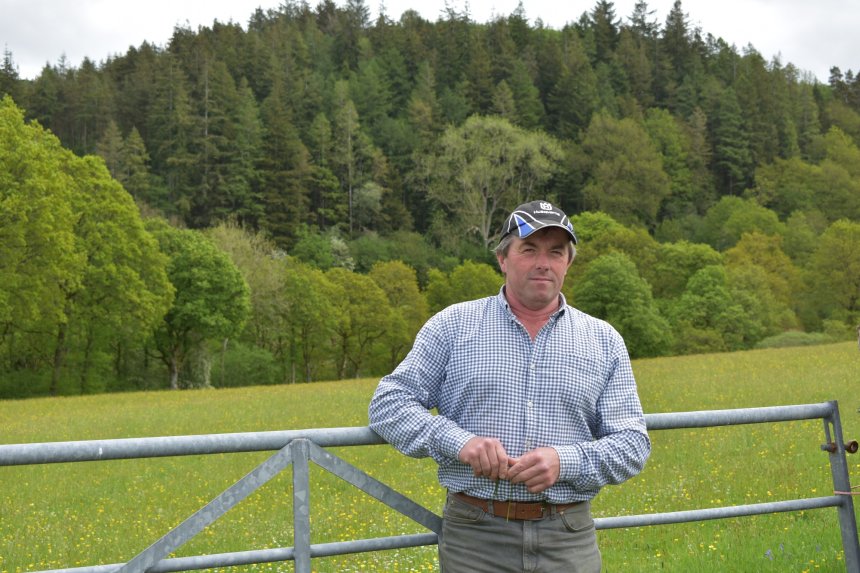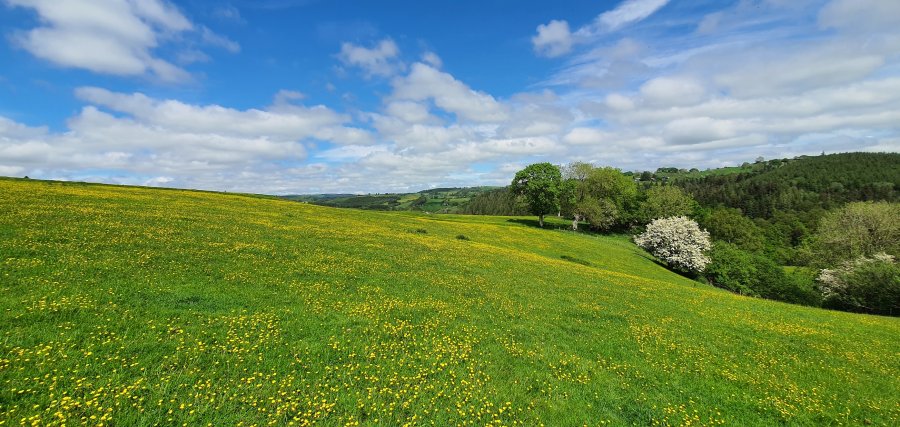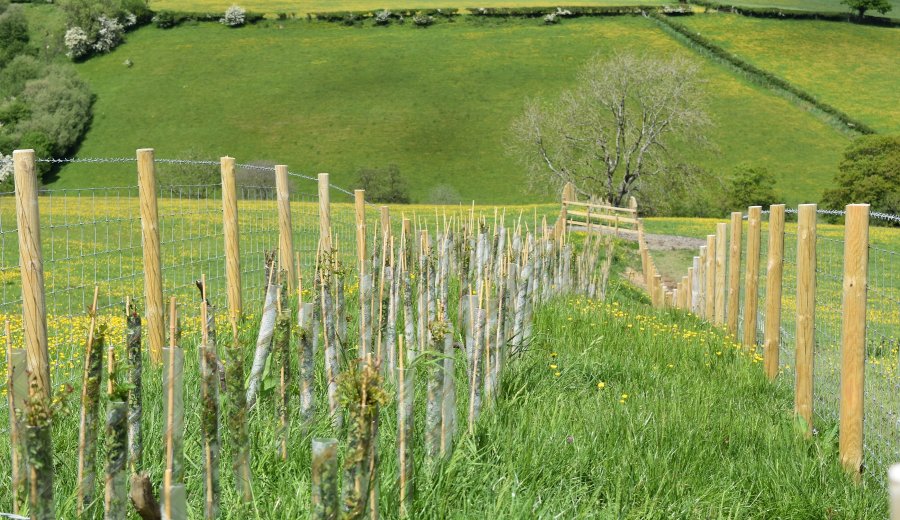
Nature, conservation and food production must and can go hand in hand, according to Montgomeryshire beef and sheep farmer Carwyn Jones.
The 160 acre beef and sheep farm at Ty Mawr, Dolanog in the Vyrnwy valley, has been in the family for many generations, with Carwyn taking over full management of the holding from his uncle in 2002.
Describing the land he says: “Most of the land here is pretty steep. There isn’t much soil, about 2 inches of soil and 2 miles of rock. So I have to manage that carefully.
"We have a lot of woodland surrounding the farm and I also look after about 30 acres of our own woodland on the farm. There is such a great variety of bird species and wildlife around and I firmly believe that’s because of how this land is managed.”
A champion hedgelayer, Carwyn has established over a mile of hedgerows alongside the farm on each side of the track and has recently planted over 600 new hedging plants.
“All in all I look after about 4 miles of hedges on the farm land. I’ve always been a fan of hedges and trees. For me, I do what I do in terms of nature and conservation work for the love of doing it. I’m mad about hedges and the benefits it brings to the land and wildlife.”
However, Carwyn is clear that livestock can’t be excluded from the conversation. He says his livestock play an intrinsic part when it comes to biodiversity.
“The livestock and the land work well together. I keep Welsh ewes, and I don’t cross them with anything. And I keep Hereford cross cattle," he says
"It’s not a highly productive farm, I’m not farming it to its full potential - it’s low input as they say. As it is now, the Welsh sheep suit it very well and the cattle too.

"I wouldn’t want too many continental breeds. I cross them with a Charolais bull but you want pretty hardy cows up here."
Walking across the fields, taking in the diversity in flora and fauna, he says: “The big word is rewilding, which sounds good on paper. But if we took all the livestock away from here, I don’t want to imagine what this landscape would look like.
"You wouldn’t be able to see the woods for the trees. People say farmers are destroying our beautiful landscape but why are they calling it beautiful?
"It’s beautiful because of the way it’s being looked after right now. It’s farmers who guard the land and there is a life cycle to it all. We work with nature.
“The land that we’re on now needs a mixture of sheep and cattle on it. If we only kept sheep here we wouldn’t get the same biodiversity. You’ve got to have manure on fields."
Carwyn has the common on one side, uplands on another side and some lowland, as well as the river: "We have our own unique habitat here on the farm and I want to improve it further."
He adds: “I think I’m probably one of the biggest conservationists in the area. My grandad and uncle were the same, they too were against spraying and fertilizing the ground, pushing the land too much.
"Their ethos of looking after the land has rubbed off on me, 1989 was the last time any fertilizer has been applied to the ground here. The farm is as natural as you can get it. I’m probably more organic here than some of the certified farms.”
The grazing style on the farm hasn’t changed much since Carwyn’s grandfather farmed the land but the stocking levels have been reduced to ensure that sheep and nature flourish.

“The first thing I did when taking over was cut down the sheep numbers by about a third. There were too many and without fertilizing there just would not have been the grass for them," Carwyn says.
"Now we have more flowers and where the cattle are, the biodiversity has gone through the roof. The land now has more time to breathe, which gives us better flora and fauna."
The buttercups and other flowers in the meadows are doing wonders for our pollinators too: "I have excellent hay meadows because they are natural and not forced," he says.
"I have kept the meadows the same since day one, I’m not part of any restrictive scheme that means well but ends up creating the opposite of what was desired in the first place."
